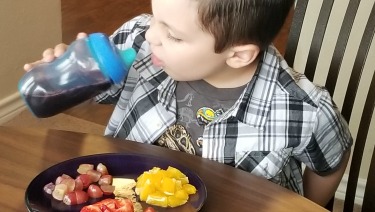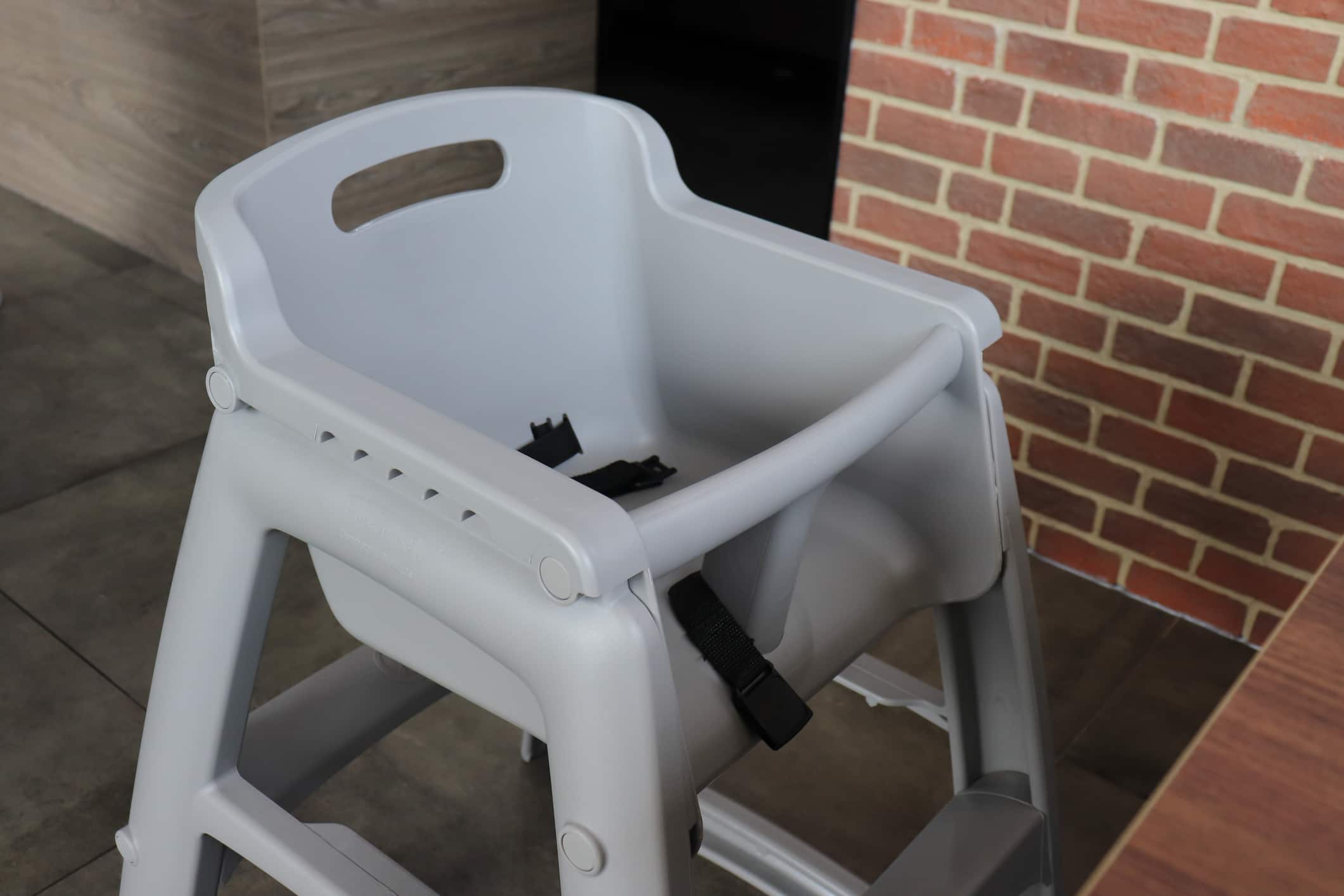- Pediatric Answers
- Posts
- Why I Screen Kids For Cholesterol
Why I Screen Kids For Cholesterol
Cholesterol Education Month. Is juice good for kids? The vomit bug is going around. Save $119.16 by cutting soda. Treating pink eye. Recall on cribs and high chairs. That confused look.

The first newsletter of every month is yours for free! After that, access all my newsletters with a premium subscription. To enjoy complete access to all content—both past and upcoming—click here for a 30-Day FREE TRIAL!
What's Inside

Why I Screen Kids For Cholesterol
Lots of parents are really surprised when I order cholesterol screening for their child.
We often tend to think that high cholesterol is only a problem in adults. But the AAP actually recommends that we screen kids between age 9 and 11 for cholesterol. We also want to screen kids who have a family history (parents or grandparents) of high cholesterol, “high blood pressure, diabetes, smoking, or obesity.” (Source: healthychildren.org.)
Why?
Kids with high cholesterol become adults with high cholesterol. If we can take steps early on to improve long-term health, we will. There might be a genetic predisposition. And, some other health issues can cause elevated cholesterol levels—we want to catch these as early as possible.
How do we screen?
It’s a blood test. We order a regular blood draw and then send it off to the lab for analysis. The results will give us a baseline to work from.
The table below is directly from the AAP—note, cholesterol levels and classifications are very different in kids vs. adults.
Classification | Total Cholesterol | Low-Density Lipoprotein (LDL) |
|---|---|---|
Acceptable | less than 170 | less than 110 |
Borderline | 170-199 | 110-129 |
High | greater than 200 | greater than 130 |
Of note: some organizations use 160 as the cut off in kids. But, be aware that the reference ranges listed for labs are usually adult norms (<200 for total) and not kids. Don’t be fooled into thinking your child is in the clear at a level of 180. All numbers are in mg/dL.
LDL vs HDL Cholesterol
In a nutshell, LDL cholesterol = bad. HDL cholesterol = good.
LDL cholesterol is the bad cholesterol because it causes plaque to build up in the arteries and reduces the blood supply to the heart. (Think heart attack.)
We want to know the total cholesterol (LDL + HDL), but we’re really concerned about the LDL levels.
Pro Tip: Familial Hypercholesterolemia is a condition passed down through families. It causes the LDL to be very high from birth (the CDC uses the cut of of >160, while the NIH uses >135 for kids) and can cause early heart attacks. It generally requires treatment with medications.
And what about Triglycerides?
Triglycerides are also another type of fat (or lipid) that comes with a lipid or cholesterol panel of tests. Triglycerides come from the food you eat (especially saturated fats, trans fats, added sugar, and alcohol) and from consuming more calories than your body needs. High triglycerides increases your risk of heart disease and stroke.
How to keep cholesterol in check
Diet and exercise. Those are the keys.
Food
No one wants to hear it, but the foods that we as American’s love to eat are the worst for our health. Afterall, what’s more American than a burger, fries, soda, and a milkshake? In short, cholesterol comes from fats (think oils and fried foods) and animal products (meat, cheese, milk, eggs, and yogurt). Now there are definitely better and worse fats (e.g., olive oil is generally considered superior to palm oil), but if you want to lower your cholesterol you simply need to eat less of these cholesterol-laden meals and snacks.
Pro Tip: Sugar is tricky. When you eat too much, your liver makes LDL cholesterol (the bad kind) and decreases your HDL (the protective/good kind). The excess calories from sugar can also raise your triglycerides.
Foods that help lower cholesterol come from the earth. These are fiber rich foods like veggies, fruits, beans, legumes, and whole grains.
Pro Tip: If moving to a complete whole foods-plant based diet feels too extreme, try “meatless Monday” and drinking water instead of soda or juice. It’s all about making sustainable changes to improve your long term health.
Exercise
The amount of exercise kids need really depends on their age.
Littles (age 3-5) need a bunch. Think 3 hours of physical activity a day.
Kids older than 6 should get 60 minutes of exercise on most days.
Healthy eating and regular exercise make such a difference in a child’s health. If you have concerns about your kid’s diet or level of physical activity, talk to your pediatrician. She can help you come up with a plan or make adjustments unique to your situation.

Fact Or Fiction: Juice Is Good For Kids

FALSE
Juice is just liquid fruit sugar, fructose and often has added sugar to boot. Kids do not need sugar. While the whole fruit does have fructose, it comes naturally packaged with fiber (which helps balance that fructose). So, eat an apple instead of drinking apple juice. This quote sums up the answer perfectly:
"Parents may perceive fruit juice as healthy, but it is not a good substitute for fresh fruit and just packs in more sugar and calories," said Melvin B. Heyman, MD, FAAP, co-author of the statement. "Small amounts in moderation are fine for older kids, but are absolutely unnecessary for children under 1."
Here’s a link to the AAP statement. It’s pretty interesting. Worth the quick read:

What I’m Seeing at Work: The Pukes! (Norovirus)

Norovirus is the classic “stomach flu” (NOT influenza), and it’s going around. I’ve seen a handful of cases in the last week. It’s a classic fall bug and easily spreads around in close quarters (think schools and cruise ships).
Norovirus causes nausea, vomiting, diarrhea, and stomach cramping. Less commonly, it can cause low grade fever, muscle aches, and headache. It comes on suddenly and can cause vomiting a bunch of times. Gratefully it is usually short lived, 1-2 days, but can last up to 6 days. The only real medical risk is dehydration, so push those fluids.
It is passed by touching contaminated surfaces or eating foods or drinking liquids contaminated by an infected person. As always, good hand hygiene is the key to preventing spread.
Fun Fact: Norovirus can live on surfaces up to 42 days! It can survive hot and cold temperatures. Yikes! Bleach-based disinfectants are most effective.


Money-Saving Tip: Drink Water Instead
Okay, I know this one is a little silly, but hear me out:
DON’T drink your calories!
I have lots of little patients who drink LOTS of soda. You’d be surprised at how much. Not only is it bad for you, but it really adds up.
Here in Utah, we love our soda joints. Take a Dirty Dr. Pepper from Swig. A big one will cost you $3.31. If you get 3 per week, that’s $9.93 per week, or $119.16 per year.
Cutting out the soda not only improves your health, it save you a chunk of money.
COST SAVINGS: $119.16

WWWD: Pink Eye
I often joke that if it weren’t for my profession, we’d be at the doctor’s office weekly with one of our four kids. I use my skills at home all the time. Here, I’ll share a recent example from home and how I handled it, including the products I used. This isn’t an advertisement—I don’t have any financial interest in these products. I simply have parents ask me all the time about what to do in certain situations and the products I use.

Scenario: I’m sitting at the computer writing the newsletter and my husband comes into the office and says, will you look at my eye? It’s starting to bug me.
This pic is what I saw. Oh no, we have pink eye (conjunctivitis) at our house. I will admit, I’m a little crazy when we get pink eye at our house. If you know anything about pink eye, you know why-it spreads like wild fire. The good news is that adults tend to be better about not spreading it (they can be told not to touch the eye and to wash hands like crazy). My husband’s presentation is classic.
The white parts are red (I’ve seen way worse, his is just in the beginning stages).
There is often drainage (see the little booger-like material in the corners of the eyes).
The lower lid will be super red and inflamed.
The eye feels scratchy and irritated.
It starts with just one eye (typical for an adult to keep it to one eye, while kids will often spread it to both eyes by rubbing)
Pink eye treatment
Unfortunately, this one requires a prescription eye drop. While it is not ER worthy, this is a diagnosis I wouldn’t wait around to see how it progresses. Aside from increasing your risk of spreading to others in your family, you can get a complication of periorbital or orbital cellulitis. For this reason, most docs will require you to be seen rather than just call in drops (to miss one of those complications is serious).
Pro Tips: You can return to daycare and school once the redness has resolved, but make sure and finish the whole course of antibiotic eye drops.

Recalls & Alerts: Cribs, High Chairs, Mattress Pads


Funny Things: That Confused Look
Sex ed is part of my job. When patients come in and have questions, or don’t know something, I help.
I was talking to a cute boy about puberty in boys and girls and asked him if he knew about periods in girls.
He said no, so I quickly explained things.
As I talked, he got this totally confused/perplexed look on his face.
Me: Do you have any questions? You look confused.
Kid: Nah, that’s how I always look.
I love this patient!

Legal Disclaimer: The information provided in this article is for educational and informational purposes only. It is not intended as a substitute for professional advice or medical treatment. Always seek the advice of your physician or qualified healthcare provider with any questions you may have regarding a medical condition or the health and welfare of your child. We do not endorse any specific products or brands mentioned in this article. Readers are encouraged to perform their own research and consult with appropriate professionals before making any decisions based on the information provided herein.



